Our Blog - Milan Day 4
In 1387, the Mayor of Milan Gian Galeazzo Visconti (remember the whole Visconti family), setup a factory to build and preserve the Milan Cathedral, called Veneranda Fabbrica del Duomo di Milano ("Venerable Factory of the Duomo of Milan"). They were (and still are) responsible for the creation, changes, and upkeep of the Duomo. The museum across the street from the Duomo has a bunch of interesting things. In addition to things from the Duomo, it has a few other pieces as well. Originals of some of the statues are here, with copies going back up on the Duomo itself. A set of the original stained glass windows were also removed and replaced with copies, with the originals stored in the museum.
This is the head of a mastiff from the last decade of the 14th century.
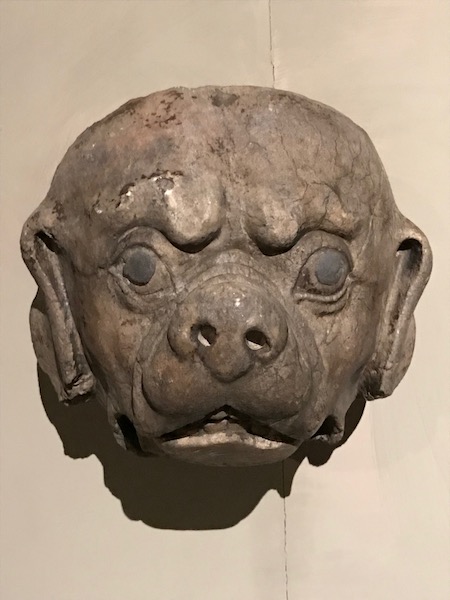
The cathedral has over 3,000 statues, and several of the originals are in the museum (replaced by copies). These are Seraphim that are from the exterior of the central apse window. The second picture is my attempt to get a closeup of the decorations on the lower part, below the actual statues.

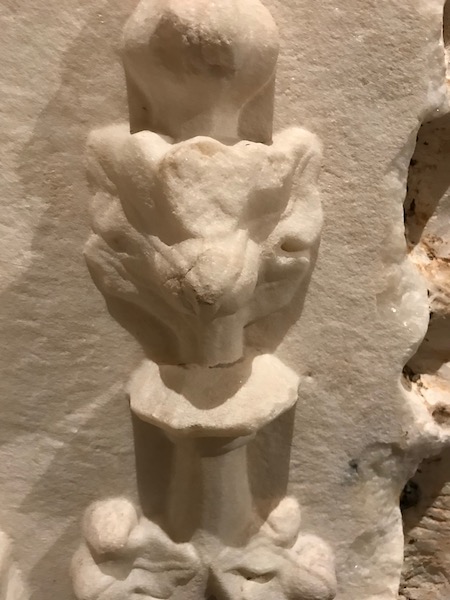
Gargoyles normally hide down-spouts designed to move water from a roof and away from the side of a building, thereby preventing rainwater from running down masonry walls and eroding the mortar between. Although most have grotesque features, the term gargoyle has come to include all types of images. Some gargoyles were depicted as monks, or combinations of real animals and people, many of which were humorous. This one dates to the end of the 14th century.
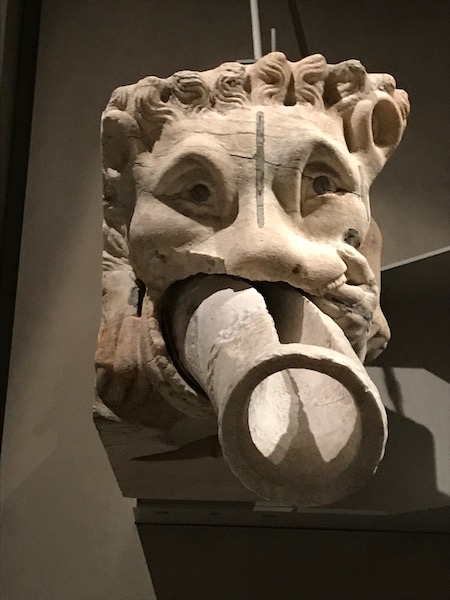

This is from the 14th-15th centuries, and I really wanted to be able to show how amazingly detailed the statues were. Look at the closeup of the hair of the beard and the fingernails.


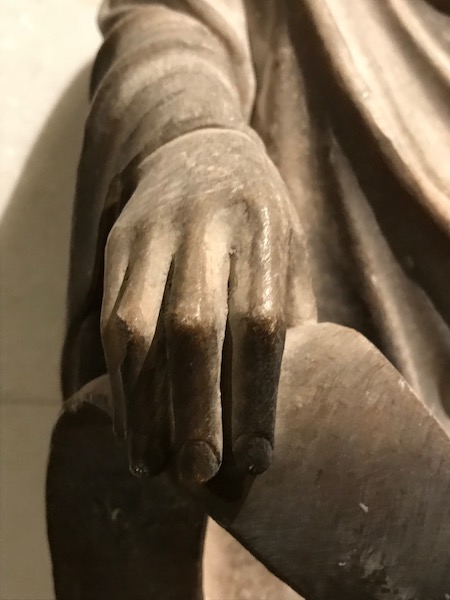
As I mentioned, they have some of the original stained glass windows in the museum, including this one dating back to the 15th century.
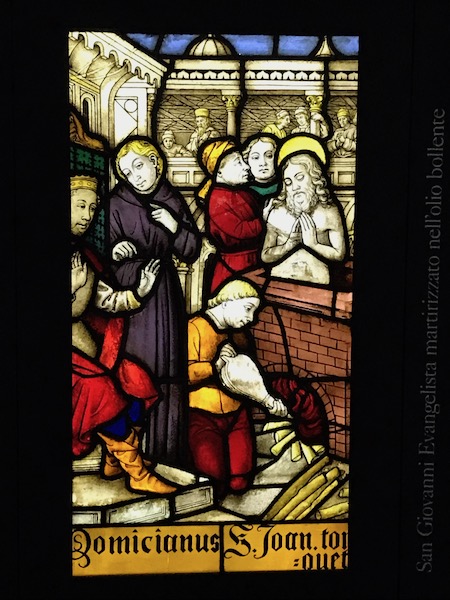
This is a terra-cotta "model" for one of the panels on the choir screen border, depicting the Flight into Egypt. The flight into Egypt is described in the Gospel of Matthew. Soon after the visit by the Magi, who had learned that King Herod intended to kill the infants of that area, an angel appeared to Joseph in a dream to tell him to flee to Egypt with Mary and infant son Jesus. Here you can see Mary and Jesus riding on the animal as they leave Egypt.

This is another model, entitled Sacrifice of Abraham, done in 1664 for a relief of the facade of the church. According to the Hebrew Bible, God commands Abraham to offer his son Isaac as a sacrifice. After Isaac is bound to an altar, a messenger from God stops Abraham at the last minute, saying "now I know you fear God." Abraham looks up and sees a ram and sacrifices it instead of Isaac. Here you can see Abraham with the knife in-hand, his son Isaac with hands bound. At the upper-right is the angel and you can even see the ram in the lower-left.
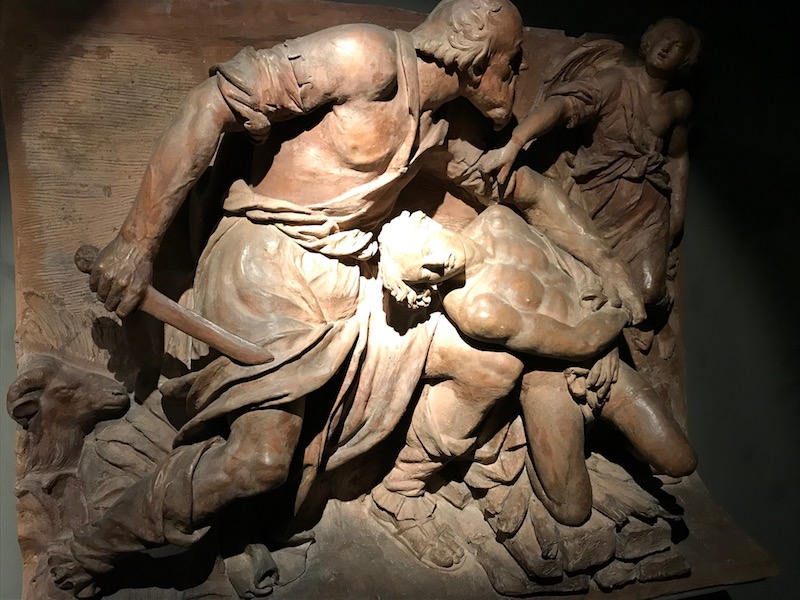
The church of San Gottardo in Corte is actually attached to the museum within the royal palace. It was built as Ducal Chapel by yet another of the Visconti family. It took 6 years, going from 1330 to 1336. It is dedicated to St. Gotthard of Hildesheim, patron saint of individuals with gout. You enter through a courtyard (from the museum) and you can see the octagonal bell tower, which had the first public clock .. before this, sun-dials were used. The interior is fairly simple, but that probably was normal for a "private" church.
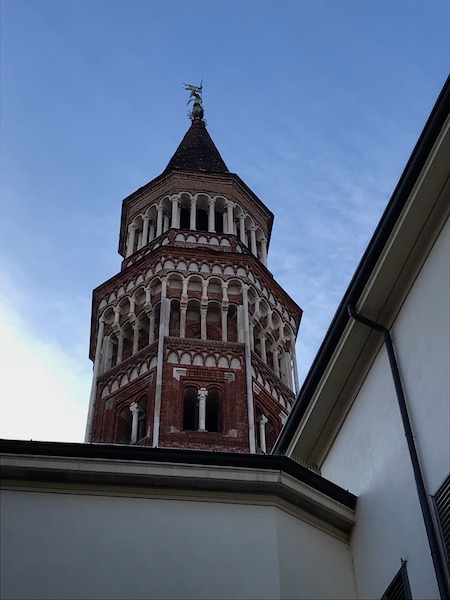
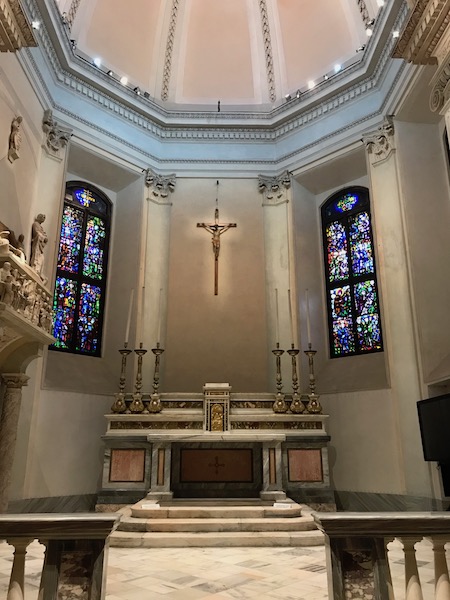
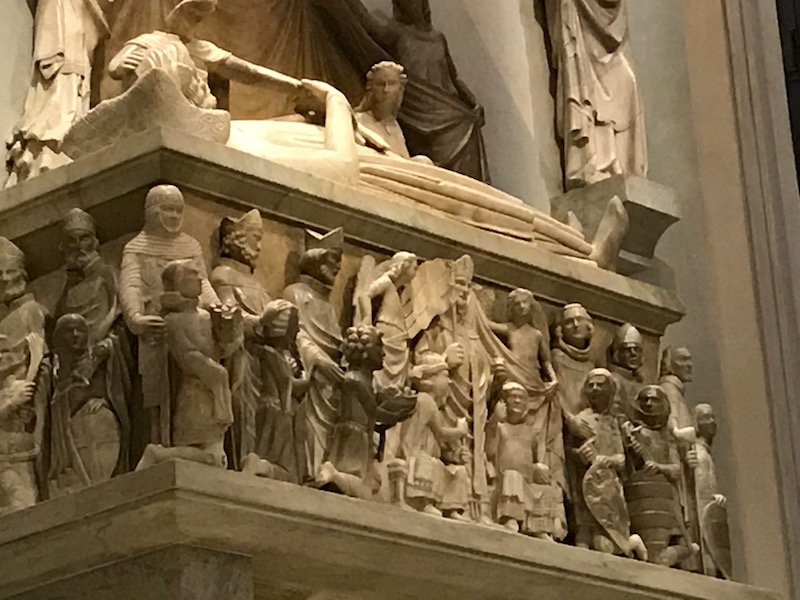
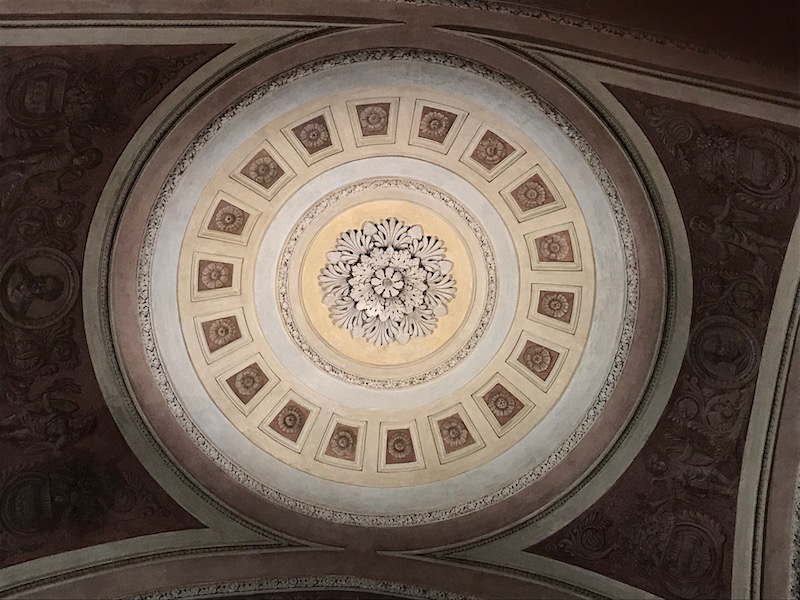
This is a fresco entitled 'Crucifixion' which was found in 1929 at the base of the bell tower on the wall of a destroyed chapel. There is a lot of damage to it, but you can still see multiple figures and 3 crucifixes along with the wings of angels.
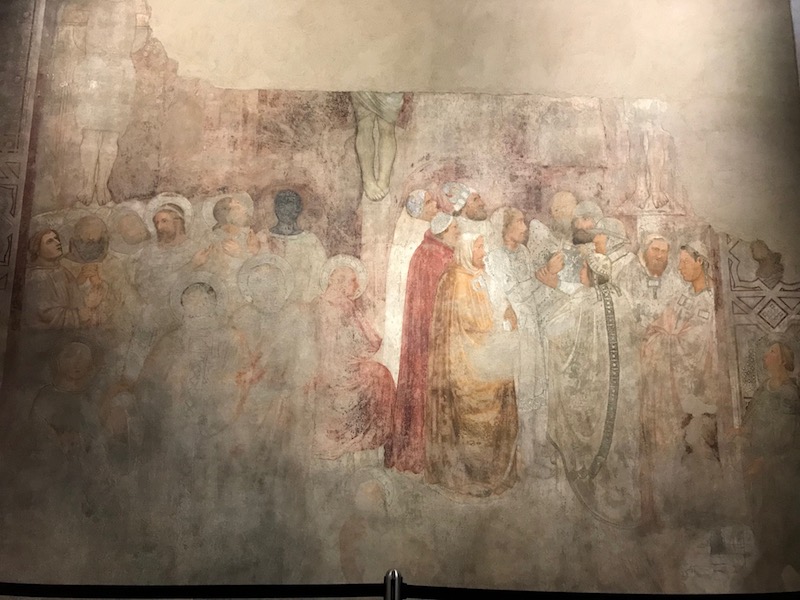
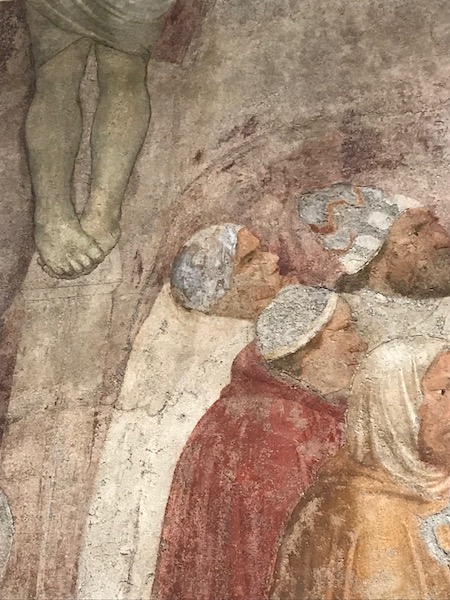
Another church, this one is Santa Maria presso San Satiro, dedicated to Saint Satyrus. It is a Renaissance building dating back to between 1476 and 1482. There is an early medieval shrine to Saint Satyrus, who is the brother of Saint Ambrose (patron saint of Milan). Legend says that in 1242, a painting of the Virgin Mary hanging on the wall "bled" when it was cut with a knife. Hence the "Santa Maria" (Saint Mary) part of the name. The church is known for its false apse, an early example of trompe l'œil (optical illusion). The first picture is the back, which is interesting, but then the front is really quite unique for a church.


It has a fairly normal shape on the interior, with a dome over the transept. Here you can see the main trompe l'œil .. the depth of the arch over the altar. Originally, the choir was designed to be much deeper but there wasn't enough room due to a busy street behind. But the designer, Bramante, found an ingenious way around this ... by painting the 3 feet walls as an optical illusion to look much deeper. As I moved from the front (where it looks deep) to the side, you can see how it really in narrow.
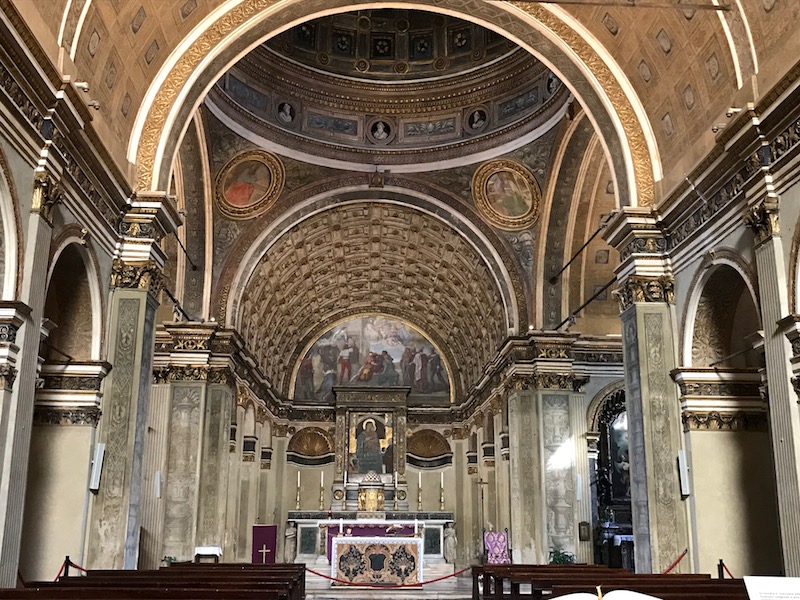
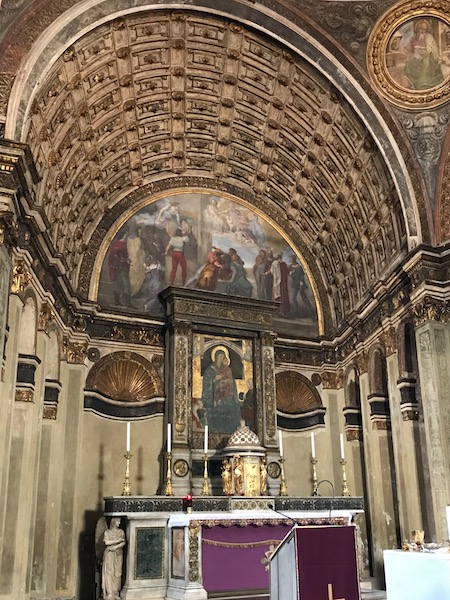

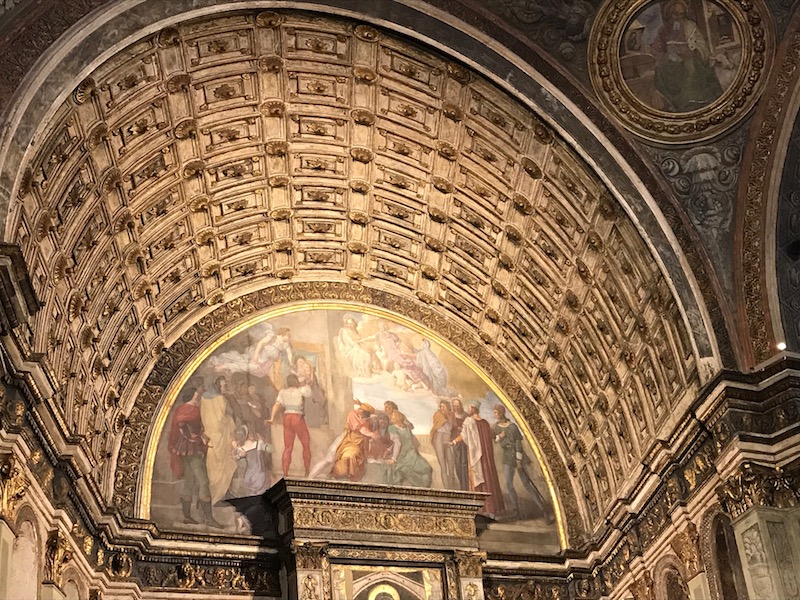
Here is another example of the trompe l'œil ... this is purely painted ... not carved.

A couple very nice paintings, and at the end, the Shrine of Saint Satiro.
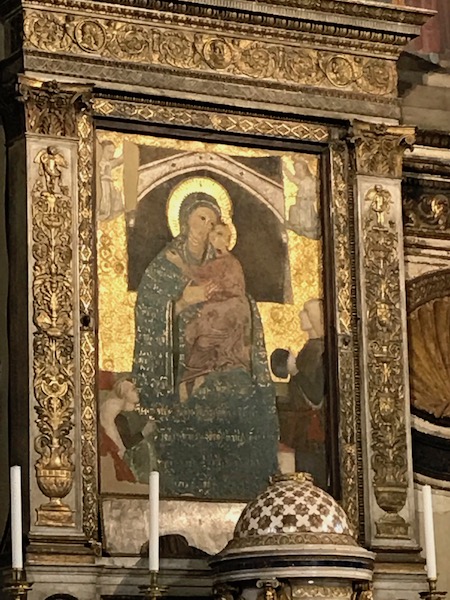
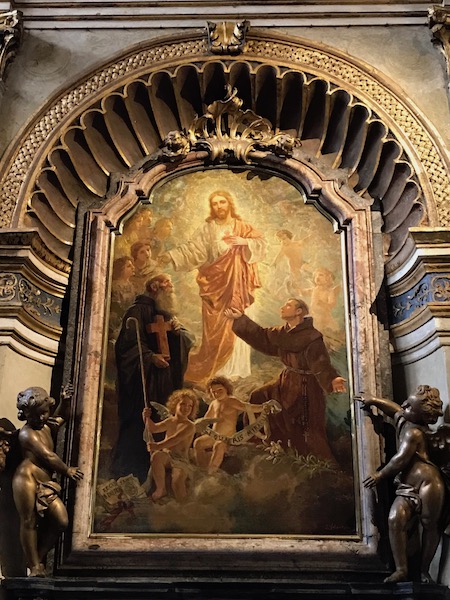
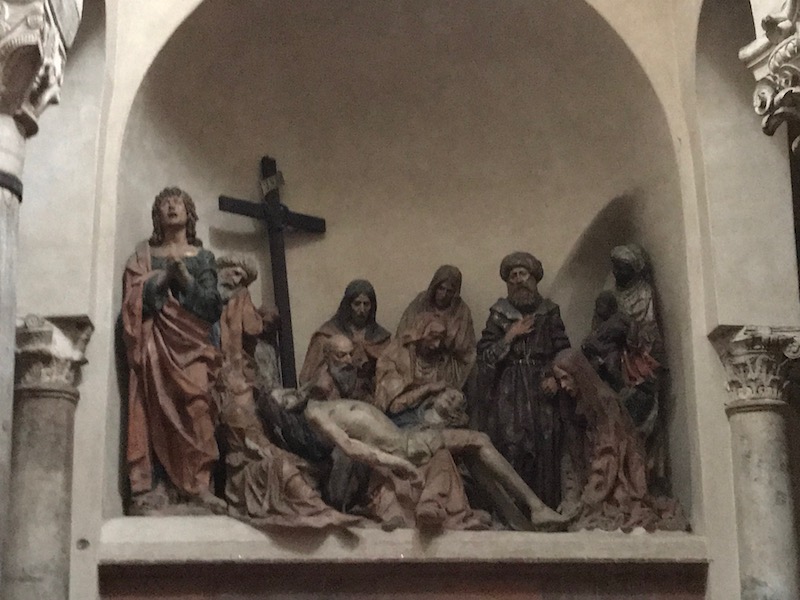
Historically, Milan had a system of 5 different canals. In the early 1930's, most of the canals ended up being covered over with streets, although the guides said that the canals (and water) were still there, just flowing under the ground. There are still a couple canals that you can visit in the Navigli area. This is a now a nice little area with shops, restaurants and some of the city's most exciting nightclubs.
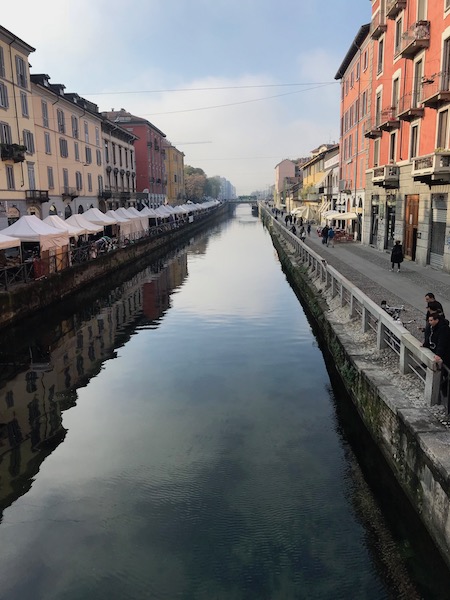

No pictures of the exterior of the Santa Maria delle Grazie al Naviglio church (right on the canal) as it was being worked on. The first church here was built in 1556 although that was demolished for a new Baroque style church, which was burned down in 1719. This church was completed in 1909, although the windows were added (as you can imagine) between 1988 and 1996.


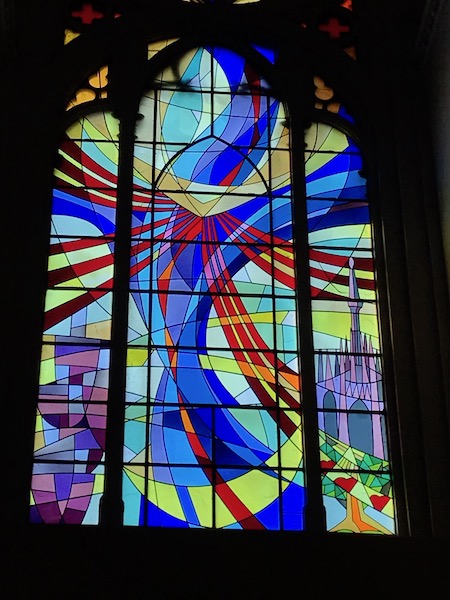

While in the Navigli area, we stopped for lunch at La Prosciutteria. We actually had wanted to go here for lunch and ended up waiting (and wasting a little bit of time) for them to actually open. For lunch, you pick what size you want, and you get a mix of sliced meats, cheese, salad and veggies, olives, and bread. You can see some of the meats and cheeses in the case, as well as hams and sausages hanging from the ceiling. We ordered a medium .. thank goodness we didn't go for large! I got it in several pictures since it was too big to actually fit in a single picture and still be visible. But you can see the various meats and cheeses, some spreads on bread, the big pan of bread as well that came with it. Salad with veggies, fruits (banana, oranges and grapes). We also got 2 fairly good-sized glasses of red wine. It was really good .... we continue to be surprised on how much we REALLY like charcuterie (sliced hams and sausage) and different cheeses, accompanied by bread. We have it for lunch every week or so, either at home or at a couple places in town.
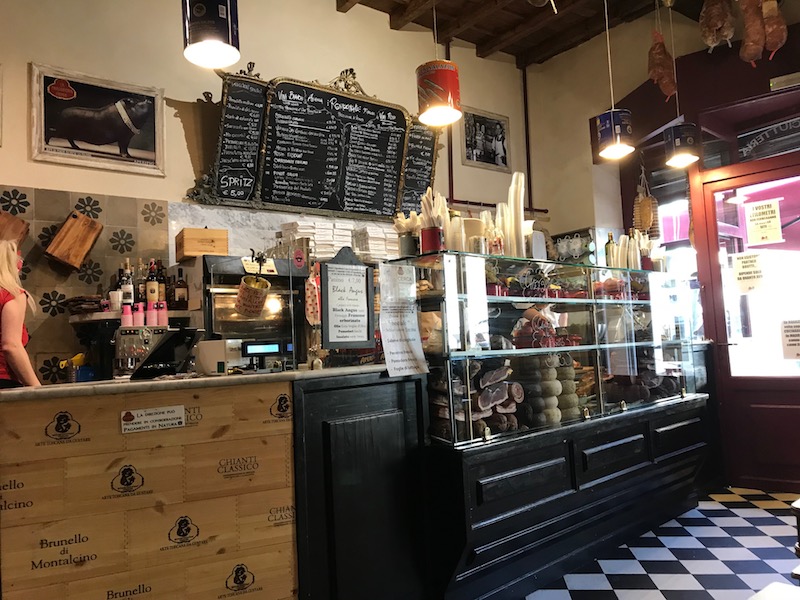
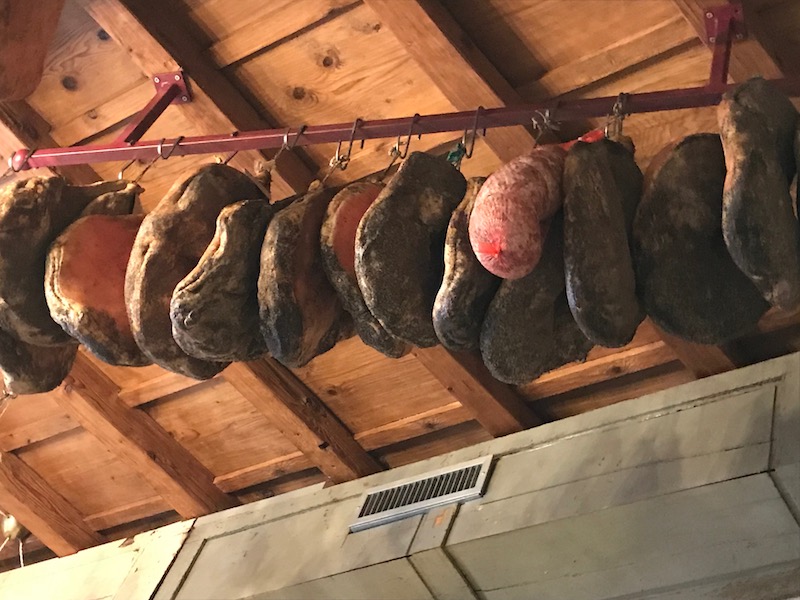

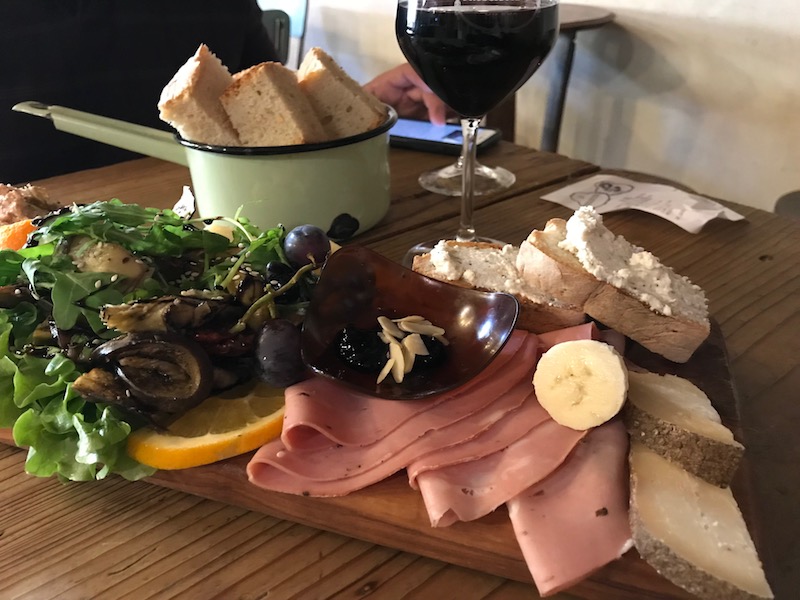
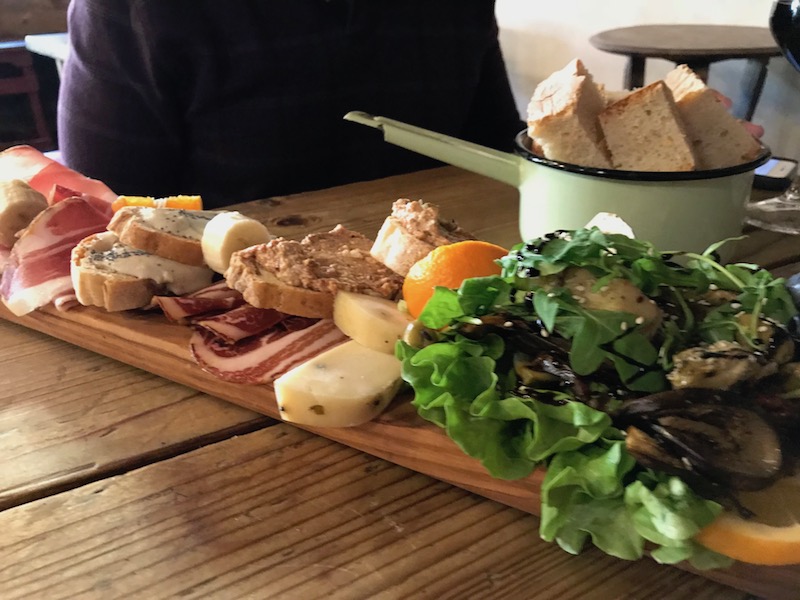
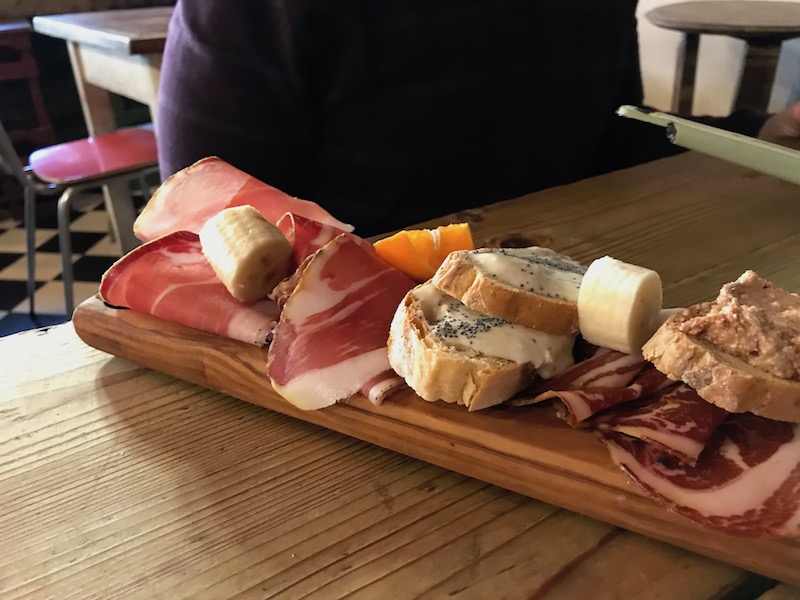

One of the most ancient churches in Milan, Basilica Sant Ambrogio was built by St. Ambrose in 379–386, in an area where numerous martyrs of the Roman persecutions had been buried (originally called Basilica Martryum and then renamed in his honor later). The exterior underwent several restorations and partial reconstructions, with the current appearance, in Romanesque style, coming in the 12th century. A Benedictine monastery was established in 789, and you can see that in the form: coming in the main doors, you enter into what would seem to be the cloister, with a courtyard with galleries all around. Two, separate, distinct religious communities shared the basilica (the monks and the canons) with each having their own bell tower: The monk's bell tower (9th century) and the canons tower (12th century).
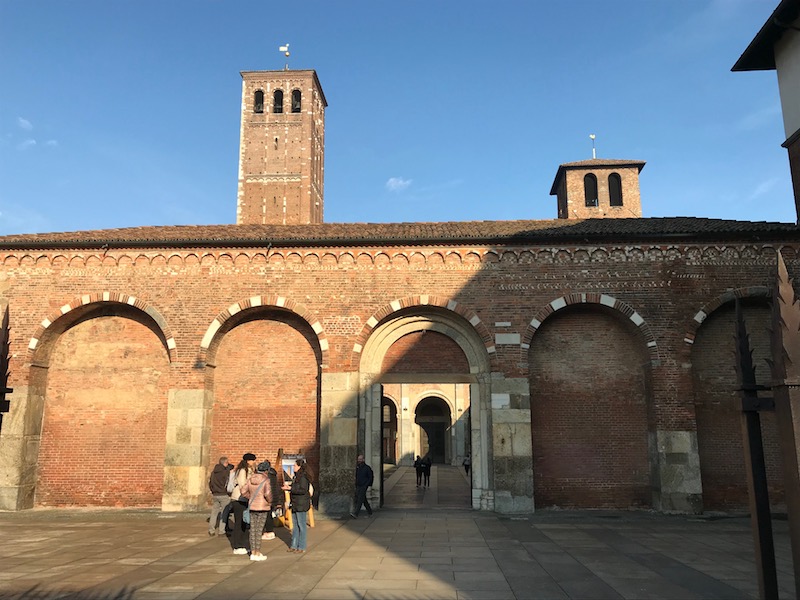
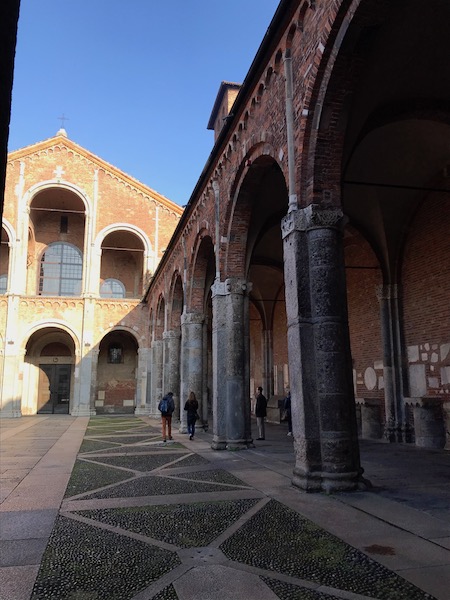
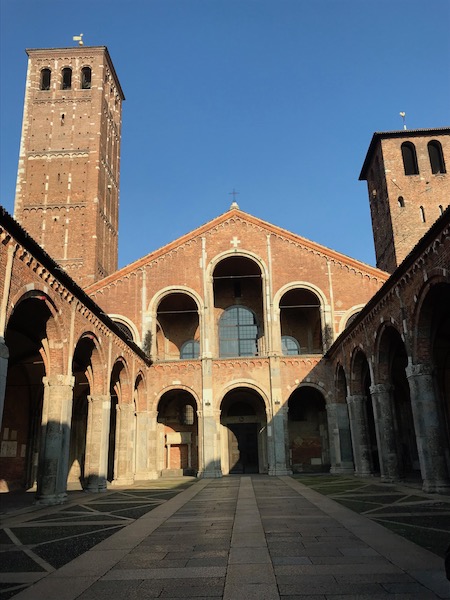
Then the church, which has 3 naves with apse's, but no transept (very different from many of the churches that we see). The Romanesque style is quite apparent on the interior, where you have the Romanesque arches all along the sides. In the dome of the alter is a Mosaic of Christ Pantokrator.


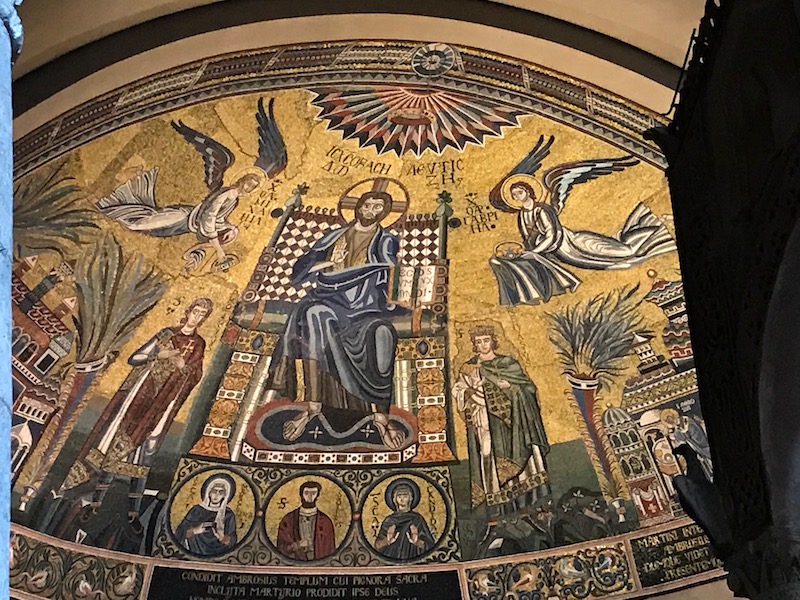
The high altar was completed by Volvinius in 859, featuring golden sides with precious stones. The structure around and above it is the ciborium, commissioned by archbishop of Milan Angilbert II. It has four red columns and bas-reliefs on each side. I didn't get pictures of each one, only the front, which depicts Christ with Saint Peter and Saint Paul. You can determine each saint by the object Christ is handing them: Peter with the keys of heaven and Paul with a book.
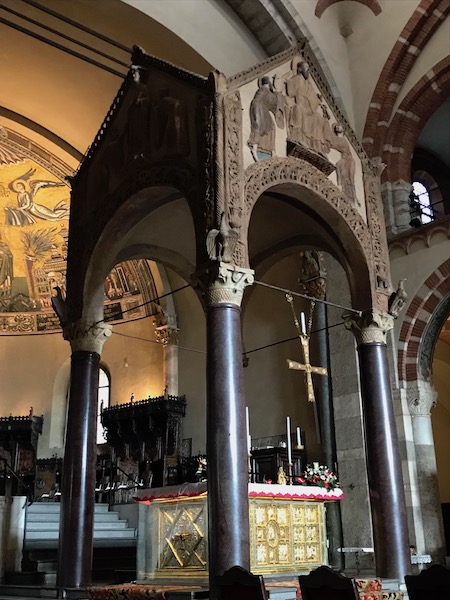
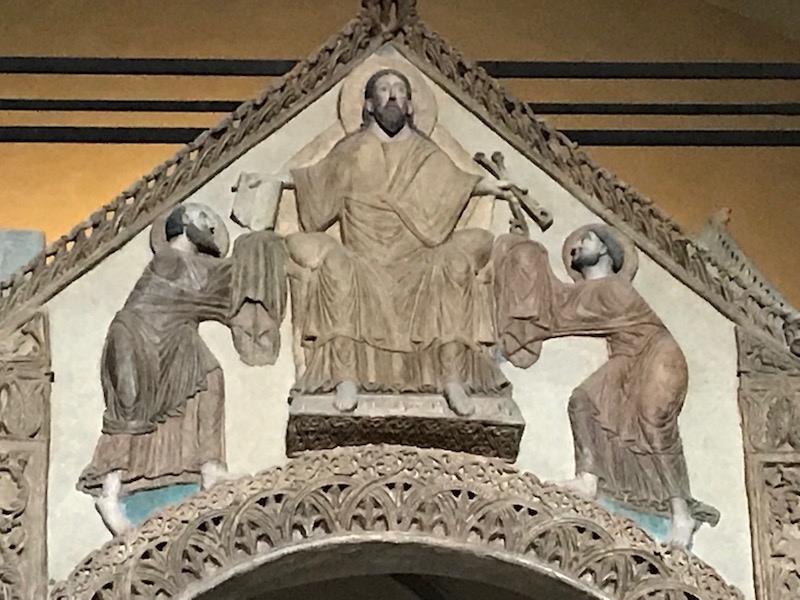
Under the alter, you can walk down to the Crypt, which was built in the second half of the 10th century although it was modified to its' current state in the 18th century. In the 19th century, the relics of 3 saints were placed here: Saint Ambrose, Saint Gervasius, and Saint Protasius. They lay within a large silver and glass box.

Milan has its' own Temple of Victory, which commemorates Milan's war dead. It was built between 1927 and 1930, and has two concentric octagons on top of each other, then a tower and lantern.

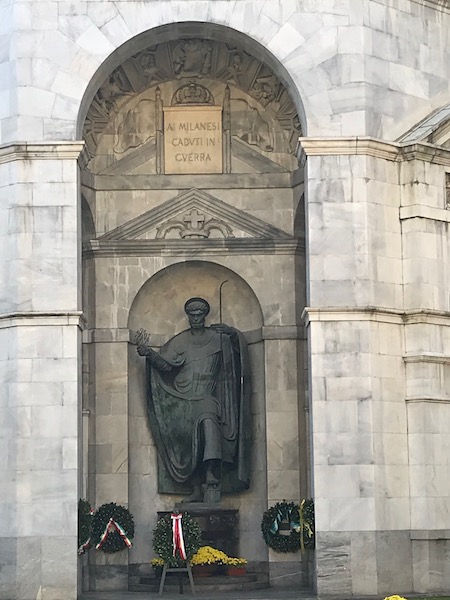
The church of San Maurizio al Monastero Maggiore is another one of those churches that is not that interesting on the outside, but just walk inside and you are mesmerized. In this case, the church is nicknamed the Sistine Chapel of Milan' due to its' amazing interior. Construction began in 1503 and it has 2 parts: one for the faithful and one for the nuns (you can now visit both parts). Restoration took 30 years and completed in 2015. First, the interior of the church for the faithful, with painted frescos from the walls to the roof, mostly done in the 16th century.

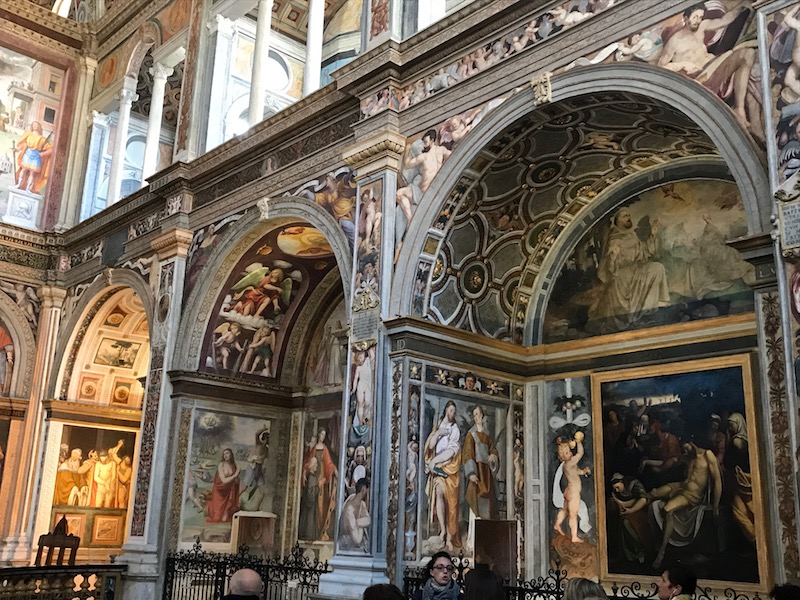
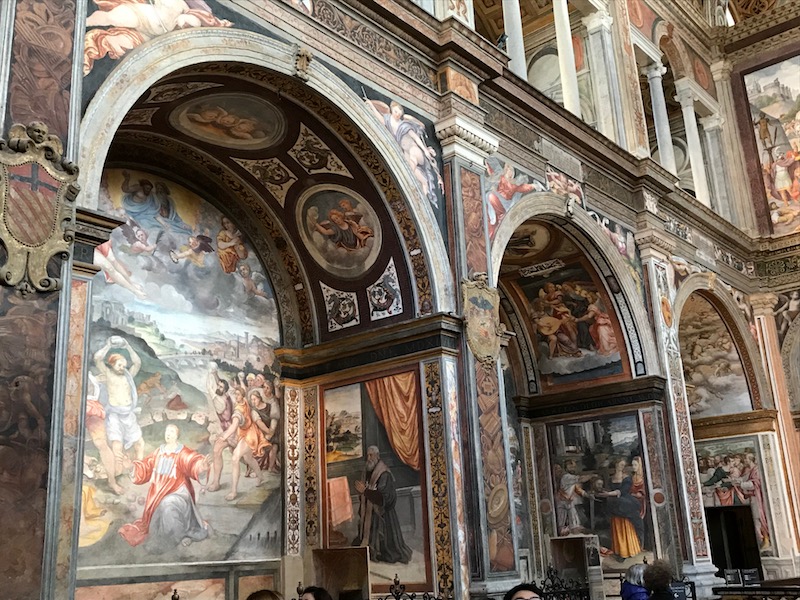

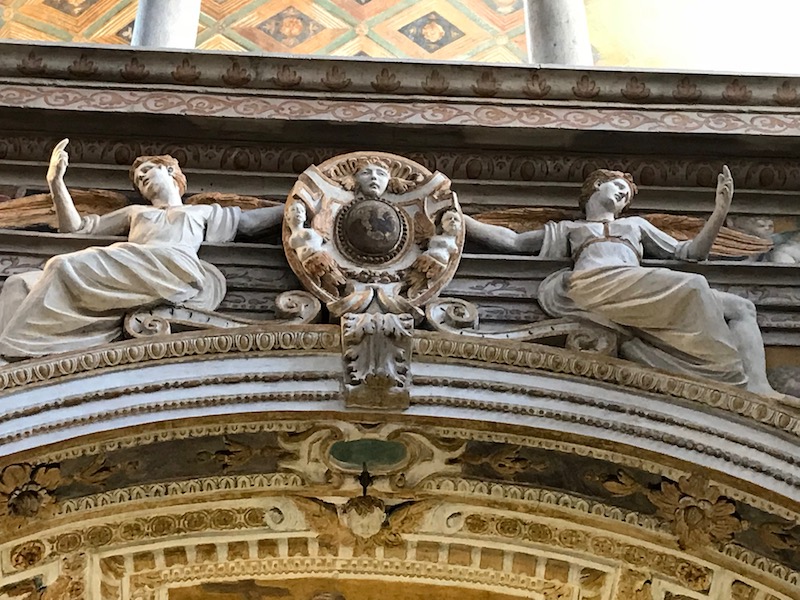
An example of the side chapels ... this is the Carreto Chapel, attributed to Evangelisa Luini around 1550. The first picture, the left side, shows the Predication of Saint Stephen: the second picture from the center shows the Martyrdom of Saint Stephen.
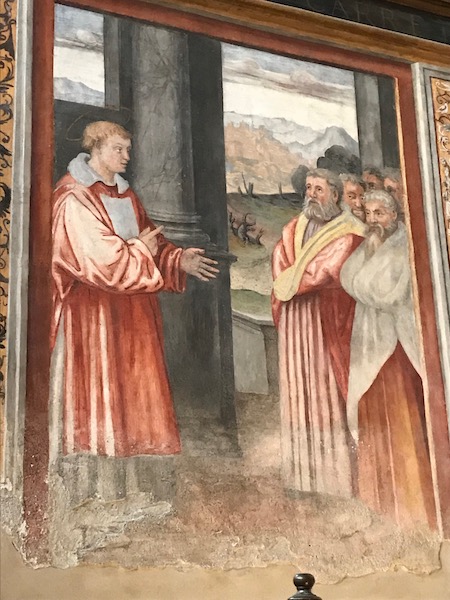
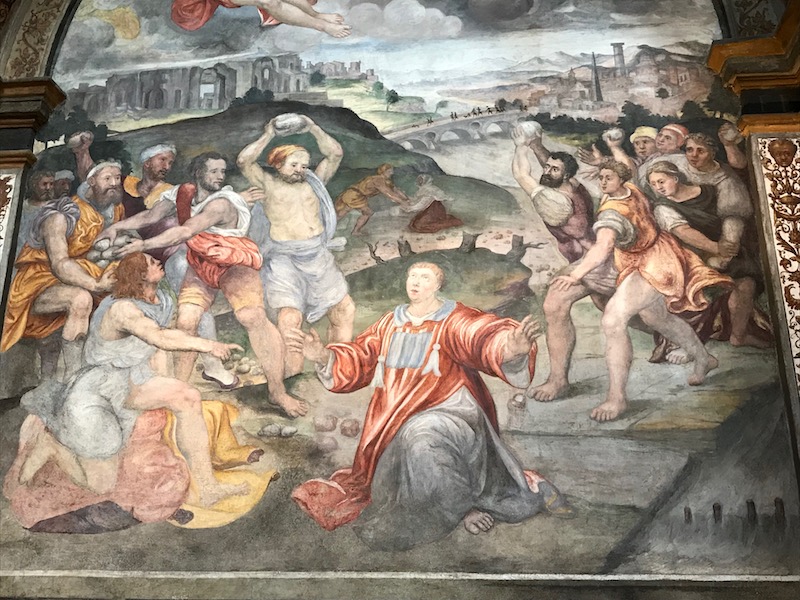
Now we transition into the formerly private section of the nuns. The hall of the nuns is also completely painted. The partition wall, a work by Bernardino Luini always the thirties of the sixteenth century, presents images of Saint Catherine, Saint Agatha, the Marriage at Cana, the Carrying of the Cross of Christ on the Cross and Christ died. On the vault of the hall of the nuns is depicted a starry sky, with God, the Evangelists, and angels. In the end there is the painting Ecce Homo.


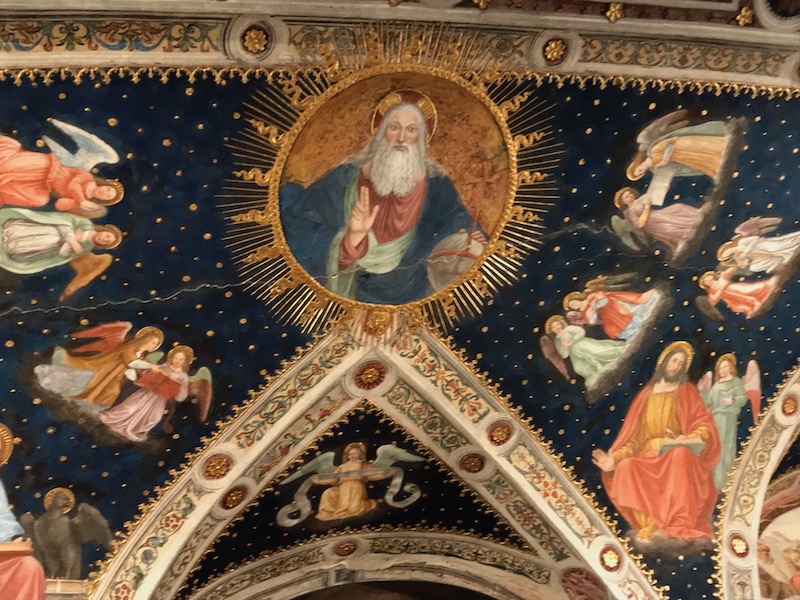
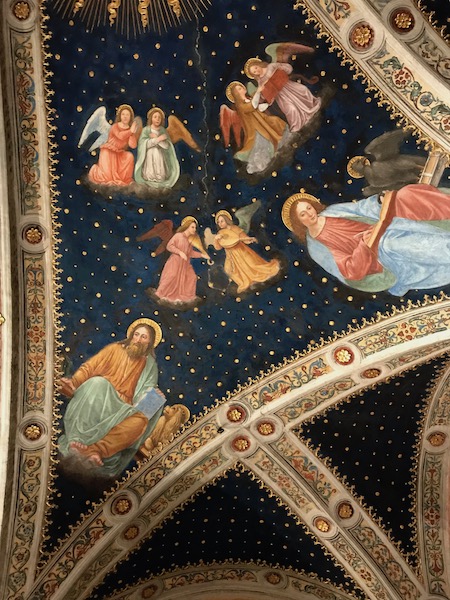
Dinner our last night was at Hostaria Borromei, which is housed in a historic building. Inside, you can definitely feel quite at-home, with white walls, wooden ceiling beams, and various "house" things all around on the walls.


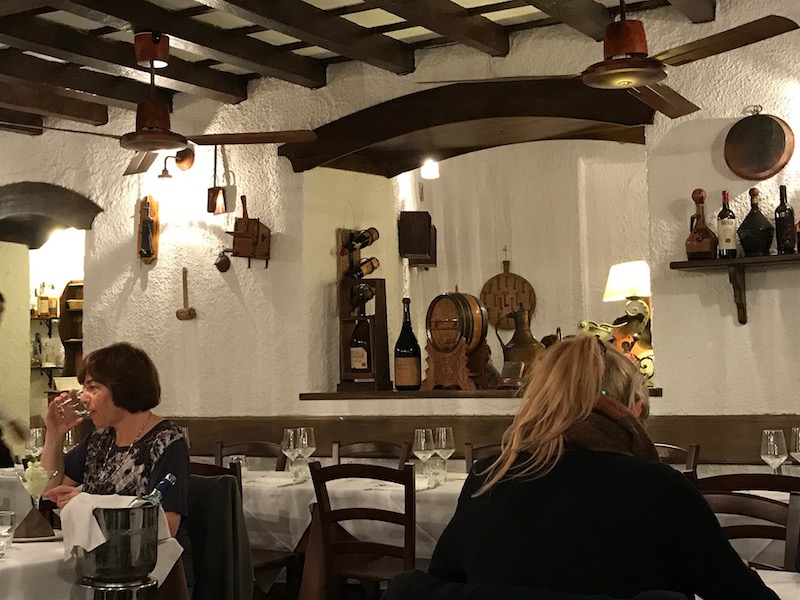
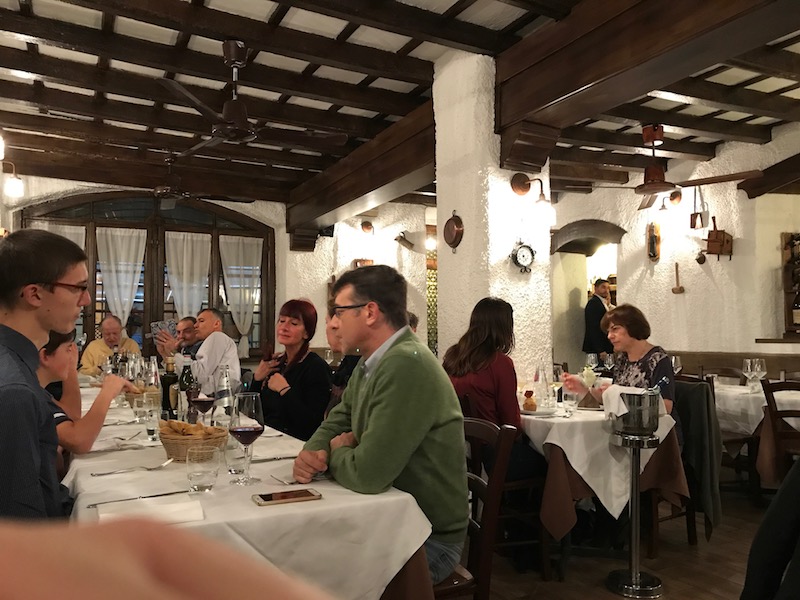
We started with Sicilian anchovies served with warm bread and butter, which normally we don't do (anchovies are not normally on the top of our list). They were better than we remember for anchovies! Then we went with Strozzapreti (a short pasta) with yellow cherry tomato, sausage and smoked scamorza cheese, which I thought was the best of the evening, along with Risotto with prawns and pumpkin, following with the risotto theme of our vacation. Interestingly enough, we were prepared to also order main courses, at which point the waiter made a bit of a face, and basically said to hold off and if we were still hungry after the pasta's, we could order more. Good thing too, since while we weren't stuffed, I think another course would have had us rolling ourselves home! So to make up for it, on the way home we found a Gelateria and both had big things of Italian ice cream for our last evening.


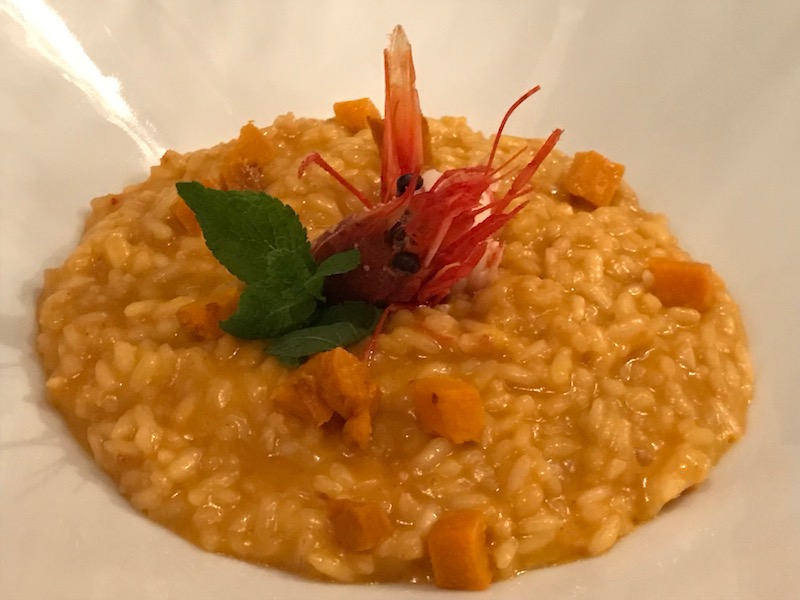
Go straight to Milan Duomo
Go back to the main Milan page
or go back to the main blog.